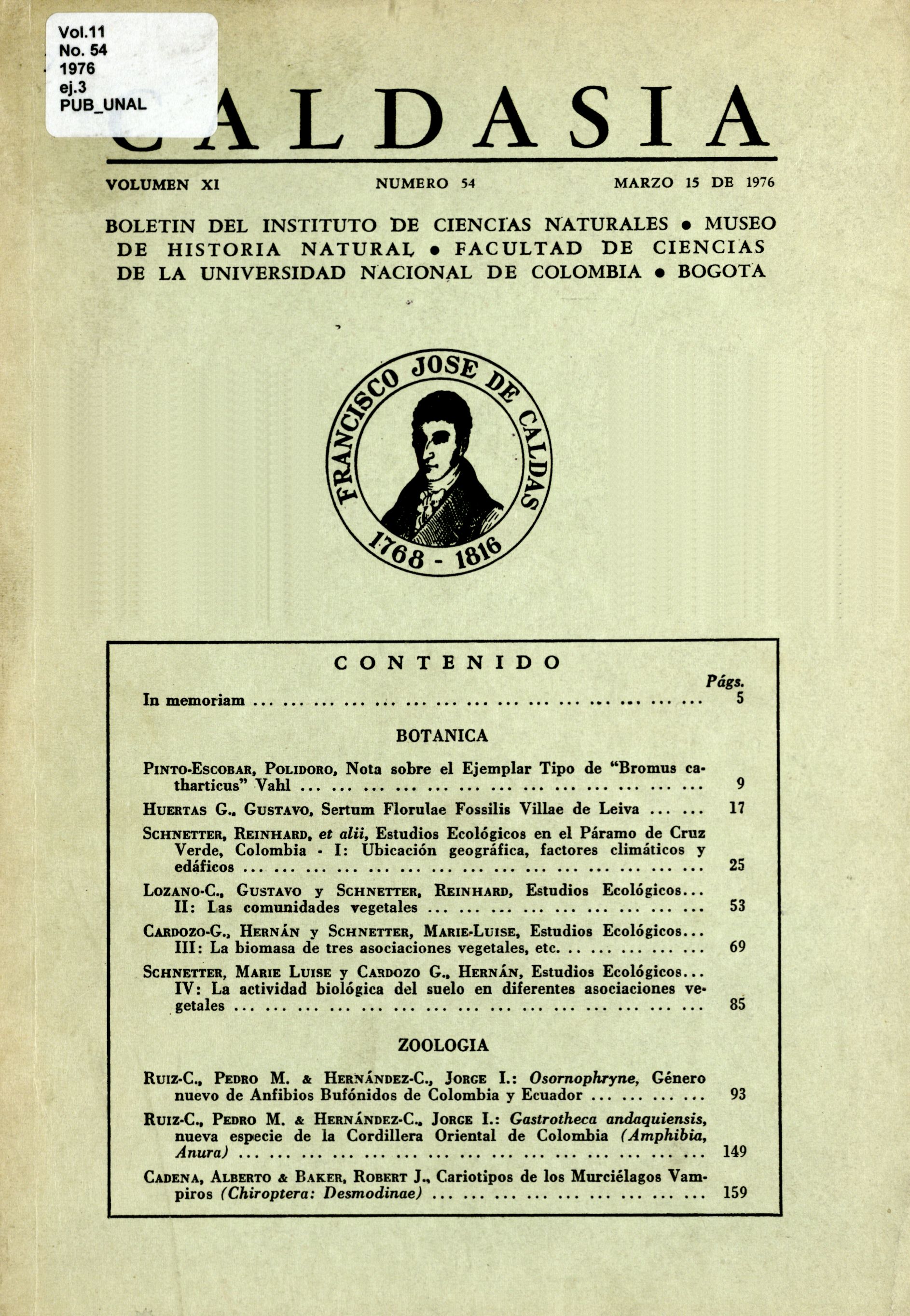Osornophryne, genero nuevo de anfibios bufonidos de Colombia y Ecuador
Keywords:
Anfibios bufonidos, Osornophryne, Atelopodidae, Pipidae, Leptodactylidae (es)Anfibios bufonidos, Osornophryne, Atelopodidae, Pipidae, Leptodactylidae (en)
Downloads
y adaptativa de las principales características. Se concluye que el género presenta algunos caracteres primitivos de gran interés, i. a. el amplexus inguinal, previamente desconocido dentro de los Bufonidae, que refuerza la tesis de que esta familia se derive de los Leptodactylidae, así como otros
altamente especializados del esqueleto y musculatura (i. a. un total de 6 vértebras presacras, como en otros 2 géneros actuales: Hymenochirus [Pipidae] y Oreophrynella [Bufonidae]). Se concluye también que Usornophryne,
aunque muestra algunas notables semejanzas fenéticas con
Oreophrynella (género monotípico del Cerro Roraima, Bolivar, Venezula), estas se deben a un extraordinario caso de convergencia evolutiva. Osornophryne es tratado como un género que se deriva probablemente de la misma filada ancestral de Atelopus, que invadió los altos páramos andinos,
especializándose y adquiriendo por paralelismo adaptativo algunas semejanzas, tales como el aspecto "bufonoide", con las especies altoandinas de Atelopus.
and myological features, with O. percrassa, sp, nov. (loc. typ.: Páramo de Herveo, Tolima, Colombia) as type species, and O. bufoniformis, comb. nov. (= Atelopus bufoniformis PERACCA,1904) from the Andes of southern Colombia and northern Ecuador, as a referred species. The functional and adaptative significance of the main characters is discussed in
detail. It is concluded that the genus presents several primitive characters of remarkable interest, i.a. the inguinal amplexus, previously unknown
in the family, which strengthens the thesis that the Bufonidae are derived from the Leptodactylidae, as well as several other highly especialized skeletal and myological features (i. a . a total number of 6 presacral vertebrae, only shared by two other recent anuran genera: Hymenochirus [Pipidae] and Oreophrynella [Bufonidae]). It is concluded also that
Osornophryne, although shows several remarkable phenetic similitudes with Oreophrynella (monotypic endemic genus of the Mount Roraima, Bolivar, Venezuela), such similitudes are due to an extraordinary instance of evolutionary convergence. Osornophryne is regarded as a genus probably
derived from the same encestral phyletic line that gives origin to Atelopus, invading the high Andean "páramos", specializing and acquiring by adaptative paralellism several resemblances, such as the "bufonoid" aspect, with the high Andean species of Atelopus.
How to Cite
APA
ACM
ACS
ABNT
Chicago
Harvard
IEEE
MLA
Turabian
Vancouver
Download Citation
Article abstract page views
Downloads
License
Copyright (c) 1976 Caldasia

This work is licensed under a Creative Commons Attribution 4.0 International License.
Authors who publish with this journal agree to the following terms:
- Authors retain copyright and grant the journal right of first publication with the work simultaneously licensed under a Creative Commons Attribution License that allows others to share the work with an acknowledgement of the work's authorship and initial publication in this journal.
- Authors are able to enter into separate, additional contractual arrangements for the non-exclusive distribution of the journal's published version of the work (e.g., post it to an institutional repository or publish it in a book), with an acknowledgement of its initial publication in this journal.
- Authors are permitted and encouraged to post their work online (e.g., in institutional repositories or on their website) prior to and during the submission process, as it can lead to productive exchanges, as well as earlier and greater citation of published work (See The Effect of Open Access).





























